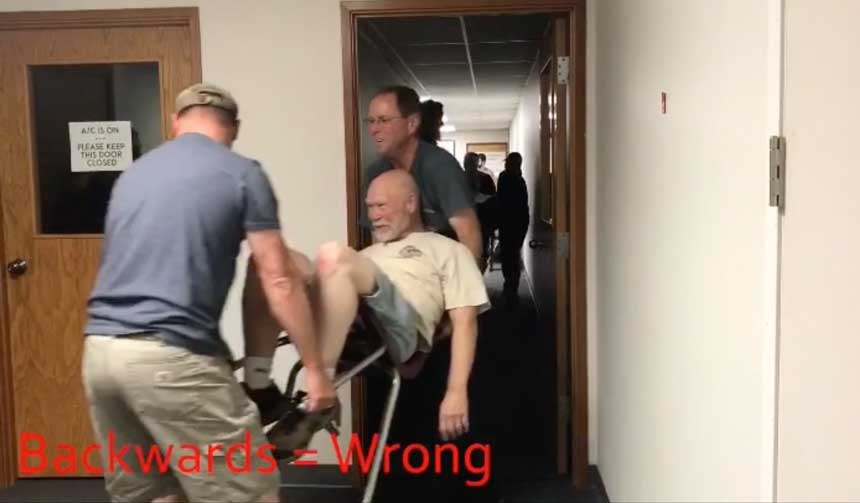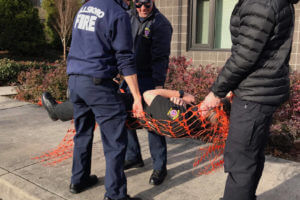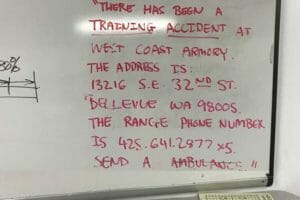
Walking Backwards is not Combat Effective
- Posted by Mike Shertz MD/18D
- Categories (S) Security & Awareness, Casualty Movement
🕖 Reading Time, 2 minutes
Moving casualties is always hard.
Use a tool whenever possible. Even a folding chair makes it easier to carry casualties quickly and over distance.
In A Book of Five Rings, Miyamoto Musashi says, “Make your combat stance, your everyday stance and your everyday stance your combat stance.” Walking backwards is not combat effective.
When picking up a casualty, as with any heavy object, you want to lift with your legs. Often, untrained rescuers will attempt to pick up a casualty by their wrists. This makes the rescuer’s job harder because you have to lift the casualty much higher to have them clear the ground. By squatting down very close to the casualty, bear hugging them under their arms, and then standing and lifting using your legs, you will both protect your own back, as well as get the casualty high enough off the ground to effectively move them. From this position, you can drag them, though that requires walking backwards which we do not like to do, or to have a second rescuer help carry the casualty.
When given the opportunity to carry a casualty with another rescuer, you want to both be facing the same direction.
Often an untrained person will come over and offer to help. They will naturally be facing you. You must give them instructions to help them get it right. For example: “I want you to pick up his feet and help carry him from there. But first, turn around so we are facing the same direct. Stand between his legs and lift at the ankles or grab the fabric of his pants. Lift when I count to three.”
In this video, students in an in-person class demonstrate walking both forwards (correctly) and backwards (incorrectly). Now imagine there is debris on the floor or an ongoing tactical situation…
Dr. Mike Shertz is the Owner and Lead Instructor at Crisis Medicine. Dr. Shertz is a dual-boarded Emergency Medicine and EMS physician, having spent over 30 years gaining the experience and insight to create and provide his comprehensive, science-informed, training to better prepare everyday citizens, law enforcement, EMS, and the military to manage casualties and wounded in high-risk environments. Drawing on his prior experience as an Army Special Forces medic (18D), two decades as an armed, embedded tactical medic on a regional SWAT team, and as a Fire Service and EMS medical director.
Using a combination of current and historical events, Dr. Shertz’s lectures include relevant, illustrative photos, as well as hands-on demonstrations to demystify the how, why, when to use each emergency medical procedure you need to become a Force Multiplier for Good.



